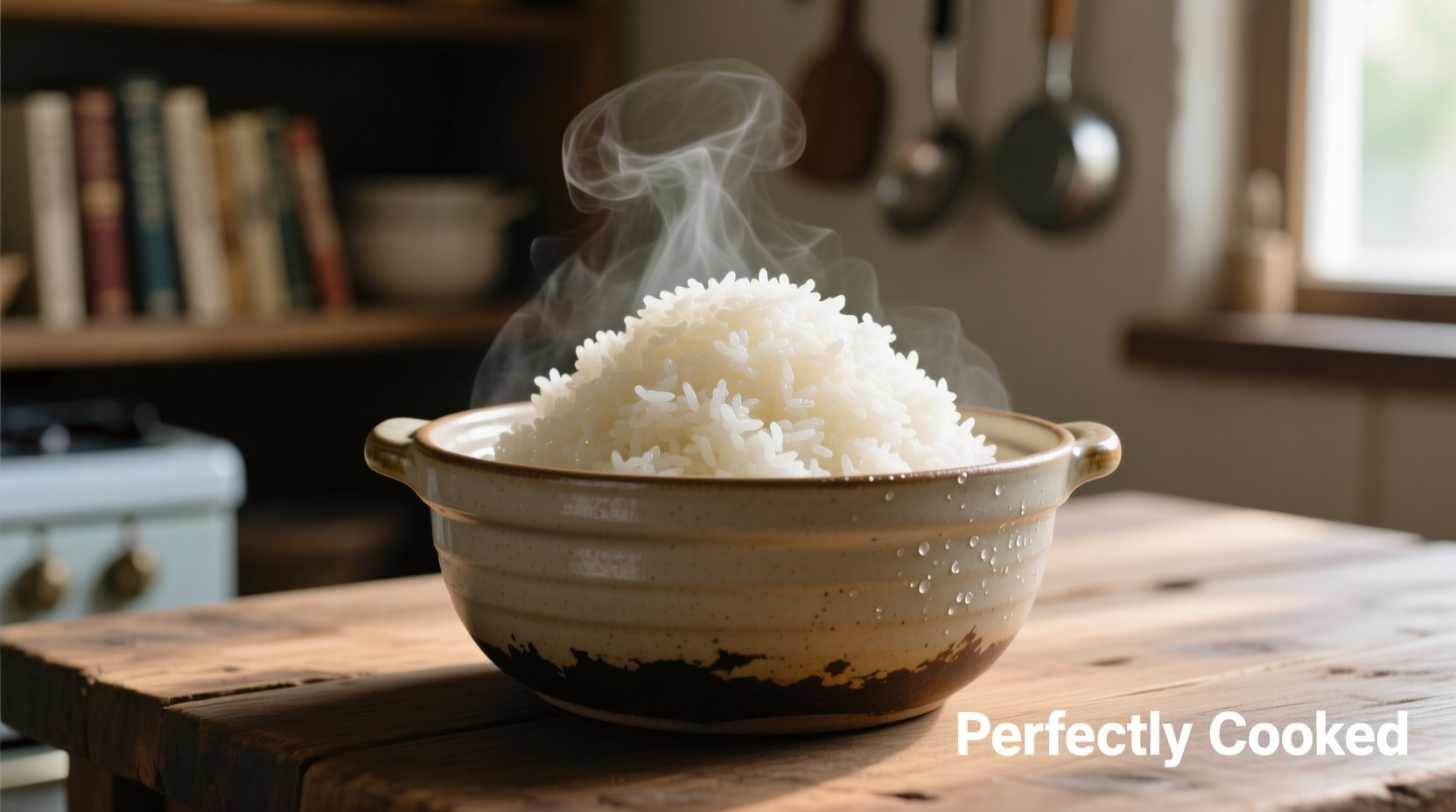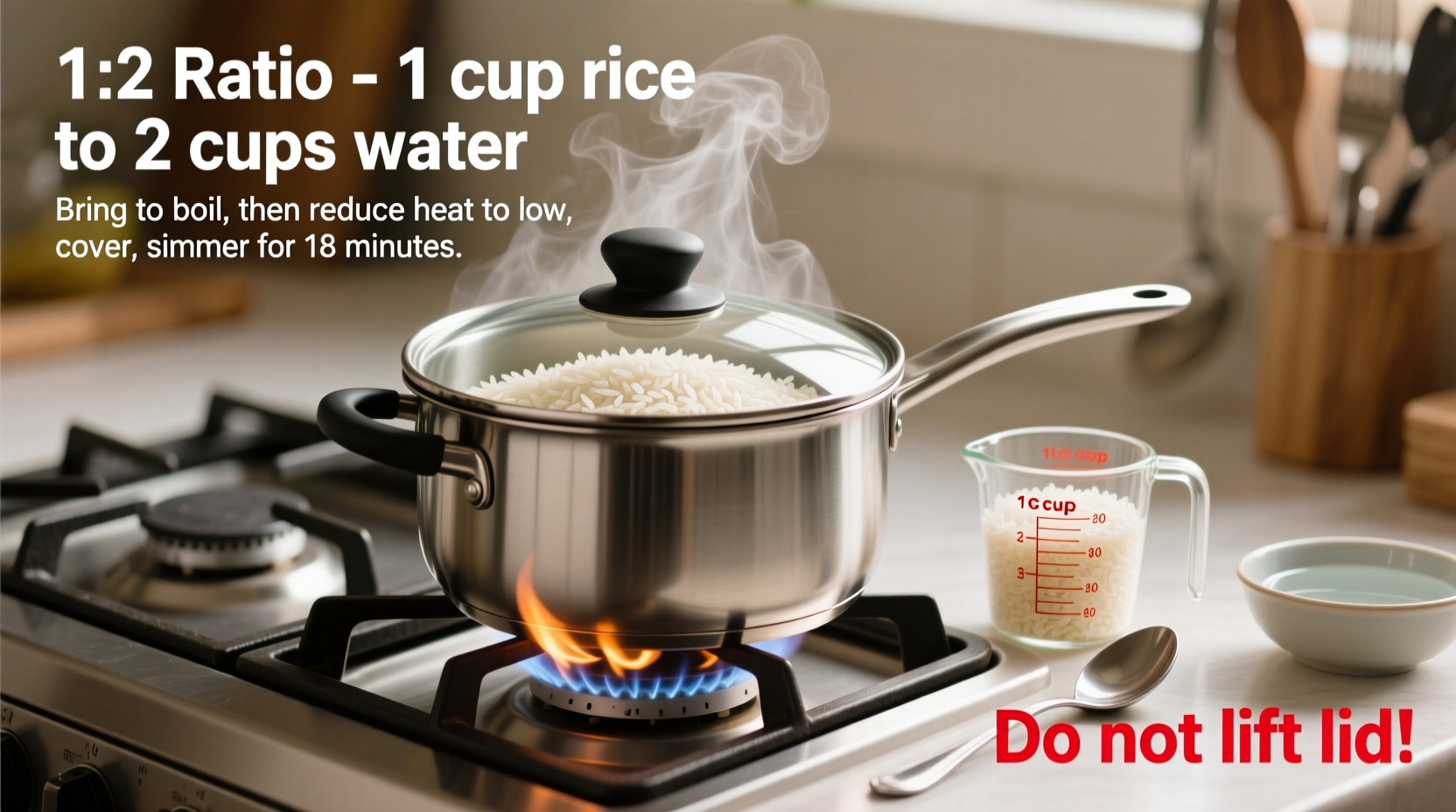Perfect stove-top rice requires just three essential elements: a 1:1.5 rice-to-water ratio for most long-grain varieties, a tight-fitting lid to trap steam, and a precise 18-minute simmer after reaching a boil. This foolproof method yields fluffy, separate grains every time without special equipment.
Mastering stove-top rice cooking transforms a potentially frustrating process into a reliable kitchen skill. Whether you're preparing a simple side dish or building the foundation for a complex meal, understanding the science behind rice absorption ensures consistent results. This guide delivers professional techniques refined through culinary testing, addressing common pitfalls like mushy texture or burnt bottoms that plague home cooks.
Understanding Rice Types and Preparation
Not all rice behaves the same way on the stove. The starch composition and grain structure determine cooking requirements. Before you begin, proper preparation makes the difference between success and disappointment.
| Rice Type | Water Ratio | Simmer Time | Special Notes |
|---|---|---|---|
| Long-Grain White | 1:1.5 | 15-18 minutes | Rinse until water runs clear |
| Basmati | 1:1.75 | 12-15 minutes | Soak 30 minutes first |
| Jasmine | 1:1.6 | 15 minutes | Minimal rinsing |
| Brown Rice | 1:2.25 | 40-45 minutes | Add 10 minutes rest time |
This fact-based comparison from America's Test Kitchen research shows why generic "1 cup rice to 2 cups water" advice often fails. Different varieties require specific hydration levels due to varying amylose content—the starch component that affects water absorption. Professional chefs adjust ratios based on these scientific principles rather than following one-size-fits-all recommendations.

The Stove-Top Rice Cooking Process
Follow these precise steps for restaurant-quality results every time. The method works for most long-grain white rice varieties and serves as the foundation for more specialized preparations.
Step 1: Proper Rice Preparation
Rinsing removes excess surface starch that causes clumping. Place rice in a fine-mesh strainer and run cool water through it while gently stirring with your fingers. Continue until the water runs mostly clear—typically 2-3 rinses. For extra-fluffy results, soak basmati rice for 30 minutes before cooking to reduce cooking time and improve texture.
Step 2: Water Temperature Matters
Start with cold water in your pot—never hot. Cold water allows gradual heating that promotes even absorption. Use filtered water if your tap water has strong mineral flavors that might affect the rice's taste. Measure both rice and water precisely using the same measuring cup for consistency.
Step 3: The Critical Boil Phase
Bring rice and water to a rolling boil over medium-high heat with the lid off. This initial vigorous boiling ensures even heat distribution before transitioning to simmering. Watch for the moment when the water level drops below the rice surface and small steam holes appear—that's your signal to reduce heat.
Step 4: Perfect Simmer Technique
Immediately reduce heat to the lowest possible setting and cover tightly with a heavy lid. Set a timer for exactly 18 minutes for standard long-grain rice. During this phase, resist the urge to peek—the trapped steam is crucial for proper cooking. Professional kitchens often place a clean kitchen towel between pot and lid to absorb condensation and prevent water droplets from making rice soggy.
Step 5: Essential Resting Period
When the timer ends, remove the pot from heat but keep it covered. Let rice rest undisturbed for 10 minutes. This critical resting period allows residual steam to finish cooking the grains evenly and lets excess moisture evaporate, transforming potentially wet rice into perfectly textured results. Skipping this step causes uneven texture and mushiness.
Troubleshooting Common Rice Problems
Even with careful execution, issues can arise. Understanding these context boundaries helps you adapt to real-world cooking conditions:
- Burnt bottom: Your burner heat is too high or pot material conducts heat unevenly. Solution: Use heavier-bottomed cookware and ensure lowest possible simmer setting
- Undercooked center: Water ratio too low or heat inconsistent. Solution: Add 2 tablespoons water and return to very low heat for 5 minutes
- Mushy texture: Over-rinsing, incorrect water ratio, or skipping resting phase. Solution: Measure precisely and never skip the 10-minute rest
- Sticky clumps: Insufficient rinsing or premature fluffing. Solution: Rinse thoroughly and wait full 10 minutes before fluffing with fork
Altitude affects cooking times significantly—above 3,000 feet, increase water ratio by 10-15% and extend simmer time by 5 minutes. Humidity also impacts results; during rainy seasons, reduce water slightly as ambient moisture affects absorption.
Storage and Reheating Techniques
Properly stored cooked rice maintains quality for meal prep. Cool rice completely within 90 minutes of cooking to prevent bacterial growth. Transfer to an airtight container with a paper towel on top to absorb excess moisture. Refrigerate for up to 5 days or freeze in portion-sized containers for 6 months.
Revive refrigerated rice by sprinkling 1-2 teaspoons water per cup of rice, covering tightly, and heating on lowest stove setting for 5 minutes. For frozen rice, thaw overnight in refrigerator before reheating. Never reheat rice more than once to maintain food safety standards established by the FDA.
When Stove-Top Works Best
While rice cookers offer convenience, stove-top preparation provides superior control for certain applications. Professional chefs prefer this method when:
- Preparing specialty rices like basmati or jasmine that benefit from precise heat management
- Cooking small batches (under 2 cups raw rice) where rice cookers often underperform
- Creating dishes where you'll finish cooking rice in broth or with added ingredients
- When immediate temperature adjustments are needed for perfect texture
However, for brown rice or large batches, a rice cooker's consistent low heat often produces more reliable results. The stove-top method shines with white rice varieties where precise timing creates the ideal texture.











 浙公网安备
33010002000092号
浙公网安备
33010002000092号 浙B2-20120091-4
浙B2-20120091-4